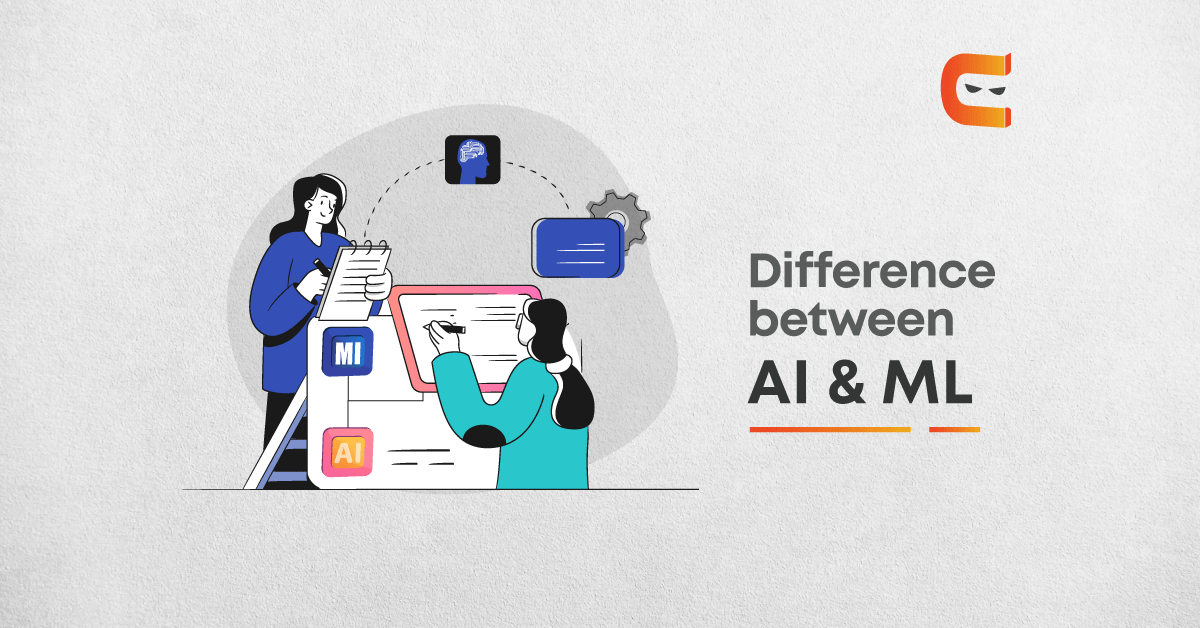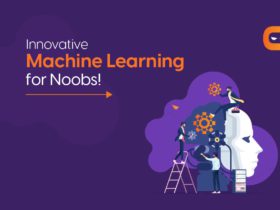Table of Contents
Introduction
When you look at the market today, there are two buzzwords on everybody’s mind- Artificial Intelligence (AI) and Machine Learning (ML). They have become a part of our everyday life and are often used interchangeably.
Both these trending technologies, used to create intelligent systems, are a part of computer science and are highly correlated with each other.
AI and Machine Learning impact and run our daily routine smoothly from behind the scenes in amazing ways.
This article explores and outlines the difference between AI and Machine Learning so that you can tell which one you’re using the next time you’re getting directions on your mobile, or reading emails, or getting music or movie recommendations.
Attempt the TCS NQT 2021 Mock Test Series by Coding Ninjas
What is Artificial Intelligence (AI)?
Artificial Intelligence or AI can be easily understood by its nomenclature. ‘Artificial’ means something created by humans artificially, and ‘Intelligence’ is the ability to think, understand or reason. Artificial Intelligence is a technology that is used in making computer systems that can mimic the human thought process.
Artificial intelligence does not require to be pre-programmed rather they use machine learning algorithms that work using their own intelligence. This involves algorithms such as deep learning neural networks and reinforcement learning algorithm.
When classified based on capabilities, AI can be put into three categories;
- Weak Artificial Intelligence
- General Artificial Intelligence
- Strong Artificial Intelligence
The AI we use currently is only weak and general AI, but the future lies in strong AI which is predicted to be even smarter than humans.
What is Machine Learning (ML)?
Machine Learning is basically about retrieving knowledge from data. It refers to something that the machine is capable of learning on its own without human intervention or being programmed. It is an AI application that helps the system to automatically learn and revamp from past data and experience.
Machine Learning or ML uses massive amounts of both semi-structured and structured data, and then the machine learning model gives results and predictions relying upon that data. These predictions are always almost accurate.
Machine Learning can be broadly categorised into three categories:
- Supervised Learning
- Reinforcement Learning
- Unsupervised Learning
Learn about Machine Learning Applications and how it will be useful in 2021.
Difference between AI and Machine Learning
AI and Machine Learning are many a time used interchangeably and often considered to be one and the same, but there are some very specific distinctions between them that make them different. Let’s discuss some of them so that you can get a better grasp of the subject matter on how AI and Machine Learning are different-
- Artificial Intelligence technology is basically used to enable machines to learn and simulate human behaviour. Machine Learning on the other hand is a subset of AI. Machine Learning authorises a machine to learn and improve from its past data and experience and does not require any precise programming.
- The AI aims at making a computer system smart enough to work out complex problems as humans would. ML aims at allowing machines to give precise outputs by learning from data.
- In AI, intelligent systems are made to perform tasks like humans and in ML, machines are taught to perform very specific tasks and give accurate results.
- AI has two main subsets- Machine Learning and Deep Learning. Whereas, ML only has one main subset, i.e. Deep Learning.
- The scope of AI is very wide whereas the scope of ML is very limited.
- AI creates an intelligent system that is able to perform a range of complex tasks on its own. Machine Learning on the other hand is creating machines that can perform specific functions for which they are trained.
- AI focuses on maximising the chances of success while Machine Learning focuses on patterns and accuracy.
- Artificial Intelligence can be classified into three types based on its capabilities- Weak AI, General AI, and Strong AI. Machine Learning is classified into Supervised, Unsupervised, and Reinforcement Learning.
- AI includes the processes of reasoning, self-correction, and learning whereas ML includes the processes of learning and self-correction when interacting with new data.
- AI deals with all kinds of data- Structured, semi-structured, and unstructured. ML on the other hand only deals with semi-structured and structured data.
- Some of the most used applications using AI are Siri, Alexa, chatbots, online gaming, humanoid intelligent robot, Expert System, etc. Some of the main applications of ML are Google Search algorithms, an Online recommender system, etc.
Level Up In Your Career With Our Premium Courses By Coding Ninjas
Frequently Asked Questions
What one should learn first depends on the field you’re looking to get into. If your preferred field of interest is AI robotics or computer vision, learning AI first is a better option for you. Otherwise, it is always advisable to start with Machine Learning.
Artificial Intelligence jobs are the most in-demand jobs in the market right now. AI is the future and many prospective employees are looking to hire young, qualified, and passionate professionals to make their companies a part of that future and benefit from it.
One cannot say that Artificial Intelligence is better than Machine Learning or Machine Learning is better than Artificial Intelligence. Both AI and ML go hand in hand and have wide applications in different fields.
AI and Machine Learning are co-related. AI is not a part of Machine Learning but Machine Learning is a subset of AI.
As discussed earlier, ML is a subset of AI, i.e. all ML is AI, but not all AI is ML. Some of the best examples of AI that are not Machine Learning are expert systems, knowledge graphs, rules engines, chatbots, and Alexa.
Choosing between AI and Machine Learning totally depends on your interests and goals. It is best to start with learning programming languages like Python and then getting into the courses of AI and Machine Learning based on your preference.
Machine Learning is not necessary for AI if you’re looking for fields like robotics to build your career in. Many similar career prospects do not require learning of ML for AI, but this completely depends on the field you’re interested in.
Machine Learning is indeed a very good career path. ML is considered to be one of the top jobs when it comes to high pay, promotions, and general demand in the market.
There are four main types of AI are:
1. Reactive Machines
2. Limited Memory
3. Theory of Mind
4. Self Awareness
The most common and most widely used type of AI in today’s day and age are Reactive Machines.
Online chatbots are the most popular form of conversational AI used.
Key Takeaways
Although AI and Machine Learning are different, they often overlap in the scientific and technological processes. Machine Learning may be a subset of Artificial Intelligence but is in no way inferior to it.
Wish to build a bright future in Coding? Enrol in Coding Ninjas Courses!
Both focus on acquiring knowledge but AI goes one step further and then applies that knowledge. AI focuses on success and not accuracy whereas the opposite is true for ML.
AI is a decision-making technology that leads to wisdom or intelligence and ML just learns from data which leads to knowledge.
They have their own areas of applications and equally contribute to making our everyday lives easier. They are both the future of mankind and contribute significantly in their own ways.















Leave a Reply